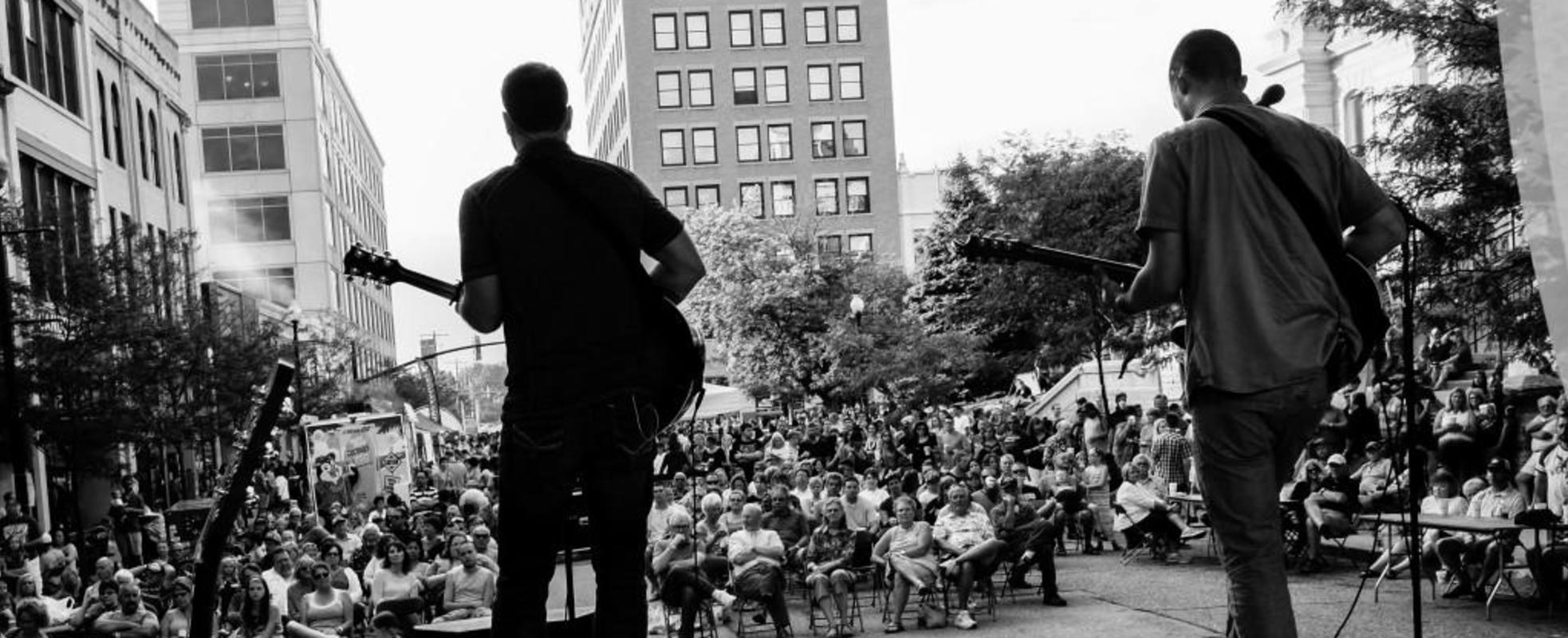When I travel, I love to visit churches.
Recently, I had the opportunity to study in Spain. I became obsessed with visiting as many churches as I could during my time in Madrid, Toledo and Valencia. I was only in Spain for a few weeks, but I visited over a dozen breathtaking churches.
After my European adventure, it was easy to grow bored with Lafayette. I soon realized, however, that I didn’t need to travel far from home to visit beautiful houses of worship. Downtown Lafayette is home to many churches, most within mere blocks of each other. These churches seem to have it all — beauty, historical significance, and impressive architecture.
The Altar at St. James Lutheran Church
The heat of the day fell away as I entered St. James Lutheran Church, stepping across the red carpeted aisle to look at the sun filtering through the stained glass windows. The church is shaped like a large triangle, the ceiling arching around a white altar.

In 1887, the St. James Ladies Society took up fundraising for this altar. Curiously, none of the three statues on the altar depict St. James, the church’s namesake.
Staying true to Lutheran tradition, St. Matthew and St. John are featured alongside Jesus Christ on the altar. Matthew reflects a commitment to serve the children of Lafayette — fitting, since St. James Lutheran school is right next door — while John highlights a ministry founded on scripture.
The church’s exterior is strongly influenced by Gothic architecture, with sharp arches above the entrance doors pointing toward the stained glass window. Additions to the building were built in the 1960s and 1990s.

Largely hailing from Germany, Lutherans have been present in Lafayette since 1848, and St. James was founded to minister to them in 1850. The church was originally located on Ferry Street, but a growing congregation soon required a move, and the St. James community moved into their current building in 1884.
Sacred Art at St. Boniface Catholic Church
A hush seems to descend when walking into St. Boniface Catholic Church. Towering ceilings and tall marble columns add an air of elegance to the building; bright statues and stained glass symbolize a broad spiritual community.
The sacred art covering much of the building makes St. Boniface unique. Catholic prayers, stenciled in graceful script, wind around the walls of the church. Artwork featuring a distinctive gold monstrance is on display above the altar, and this image was previously used as the letterhead for official St. Boniface communication.
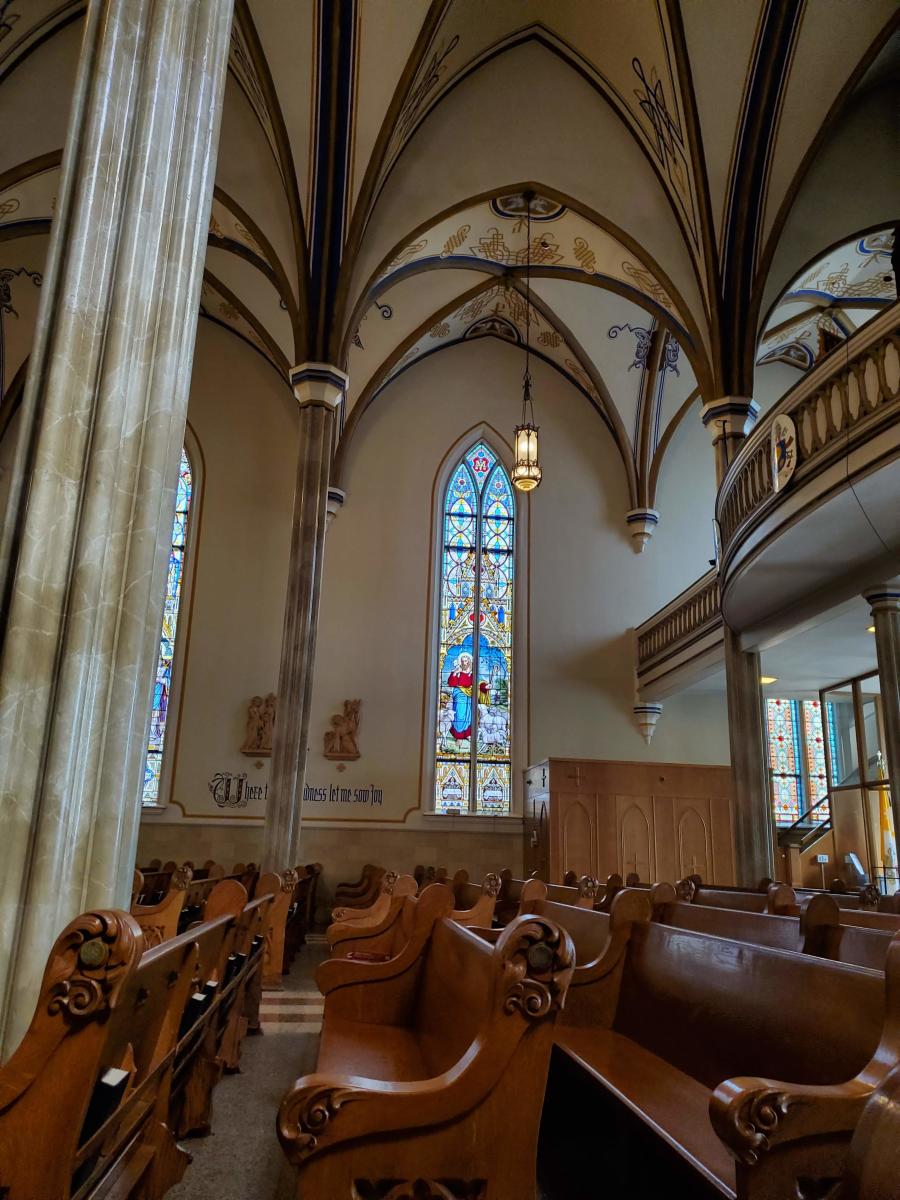
St. Boniface was founded in 1853 to minister to the German Catholic community and was originally a mission of the Franciscan friars of Cincinnati. The current church was built in 1865. Constructed in Gothic Revival architectural style, the church’s spire and tower were added in 1887.
The cultural roots of St. Boniface are still on display through its annual Germanfest, a street festival occurring every fall. In recent years, the church has welcomed performances of sacred music by Purdue Musical Organizations.
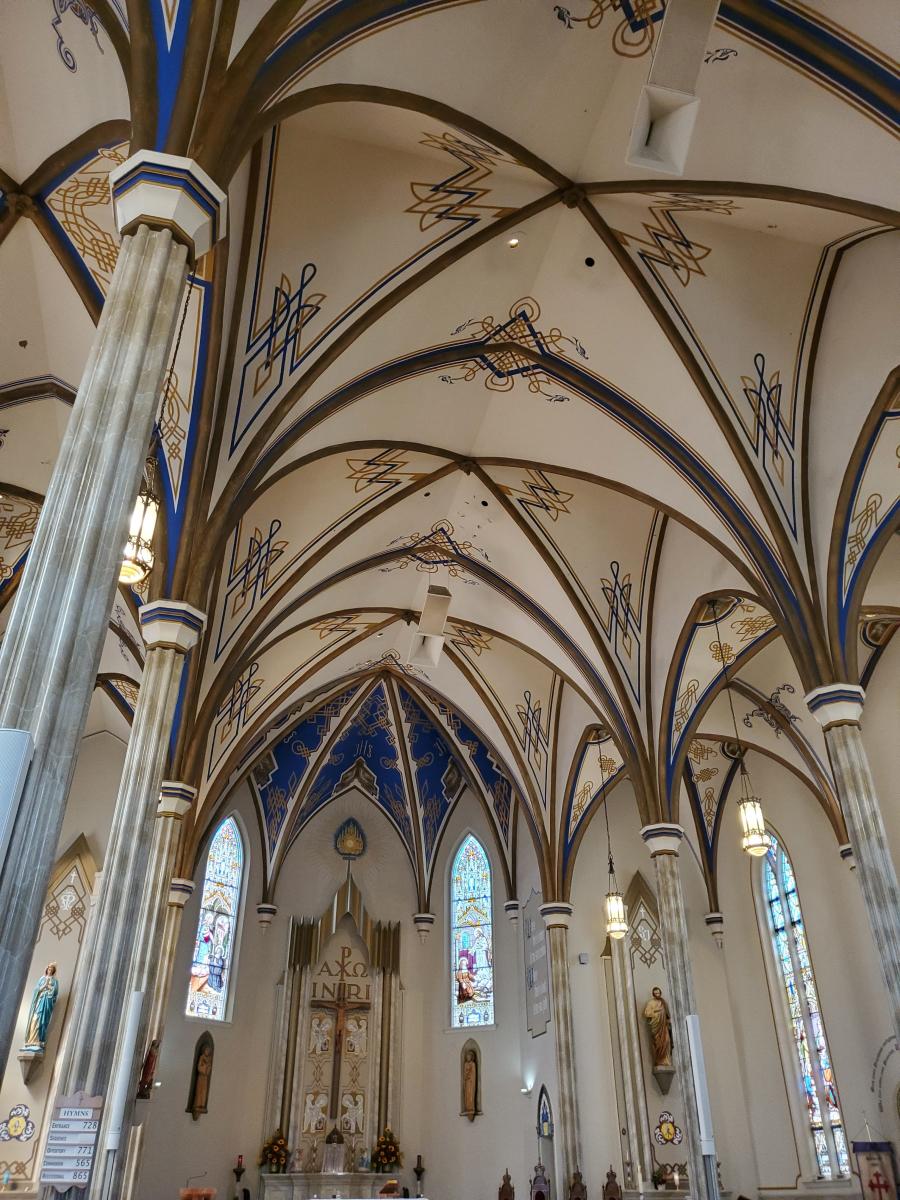
Other traditions still live on within St. Boniface, including a weekly prayer for the help of St. Anthony of Padua, a practice of the parishioners since 1898.
The Organ at First Baptist Church
The first word that comes to my mind when viewing First Baptist Church is “grand.”
The sanctuary’s beauty makes it ideal for performances, and the Lafayette Master Chorale sings there every year. The 18-stop tracker-action pipe organ draws the attention immediately upon entering, looming in front of the cushioned pews and reaching up to touch the ceiling. It was purchased in the 1800s for $40,000 and is still in use today.
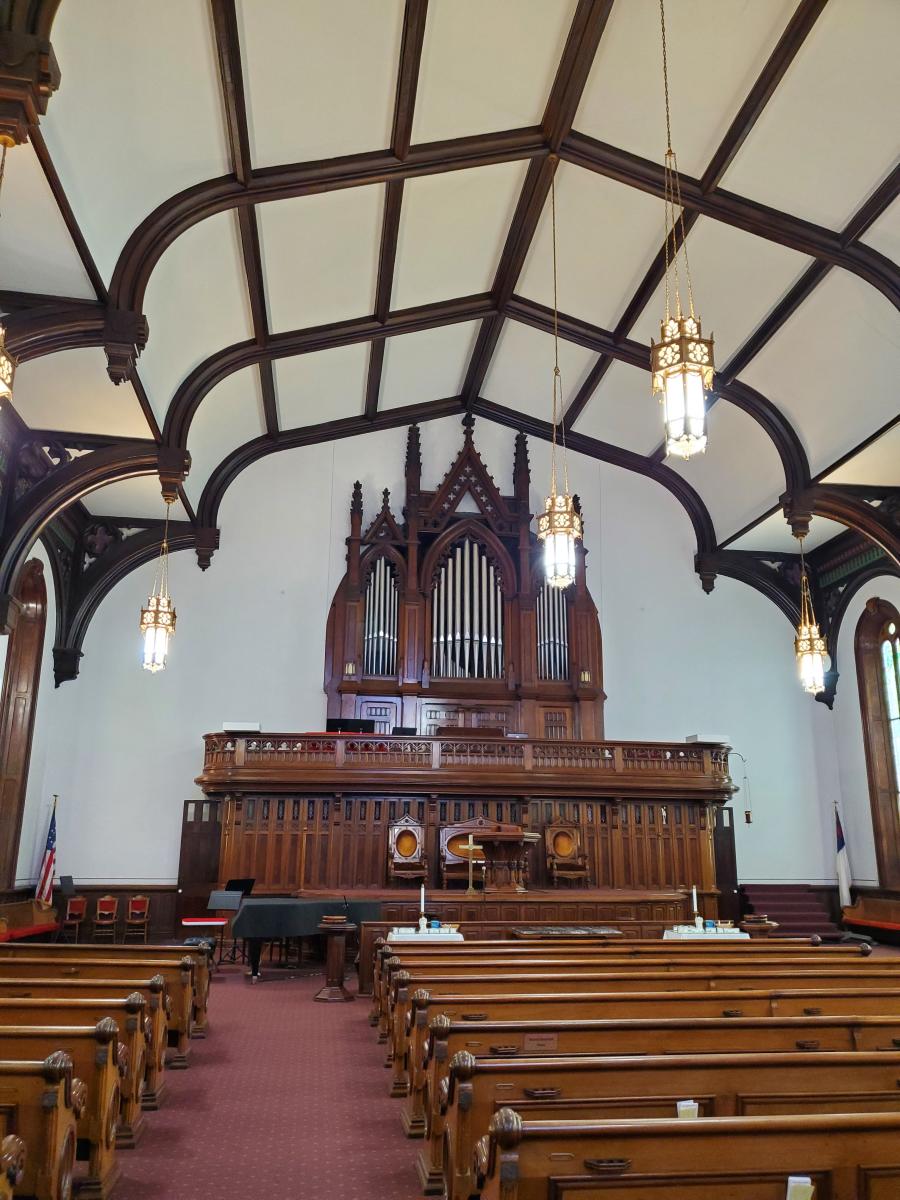
Built in the Norman Gothic architectural style, the church building is an imposing sight. Inside, walnut woodwork complements the colorful stained glass windows. Creaky floors add to the aged, historic feel.
First Baptist Church was founded in 1835. The congregation used the Wabash River for early baptisms but ended these once their current building was finished in 1872. In the same year, African American members of First Baptist helped found the Second Baptist Church, holding services in the basement of First Baptist until their church was built in 1878.

The southern portion of First Baptist was designed by local architect Elias Max. Though the building originally featured spires, they were removed in 1921 and replaced with Gothic parapets.
Stained Glass Windows at Trinity United Methodist Church
It’s hard to miss Trinity United Methodist Church.
Trinity’s windows were designed and installed by Edna Browning Ruby, who grew up attending Trinity youth group events and church services with her family. She died in 1937, when she was still the only woman in the United States to design and install stained glass windows.
Ruby’s windows are on full display in Trinity’s sanctuary, brilliant when illuminated by the sun. Pieces of colored glass mesh into a pleasing design, contrasted by the polished wood trim surrounding the church’s interior.
A large organ dominates the space. The exterior of the church is just as impressive — the short teal spires rest proudly atop an impressive facade, and the Gothic Revival architecture demands the attention of passersby.
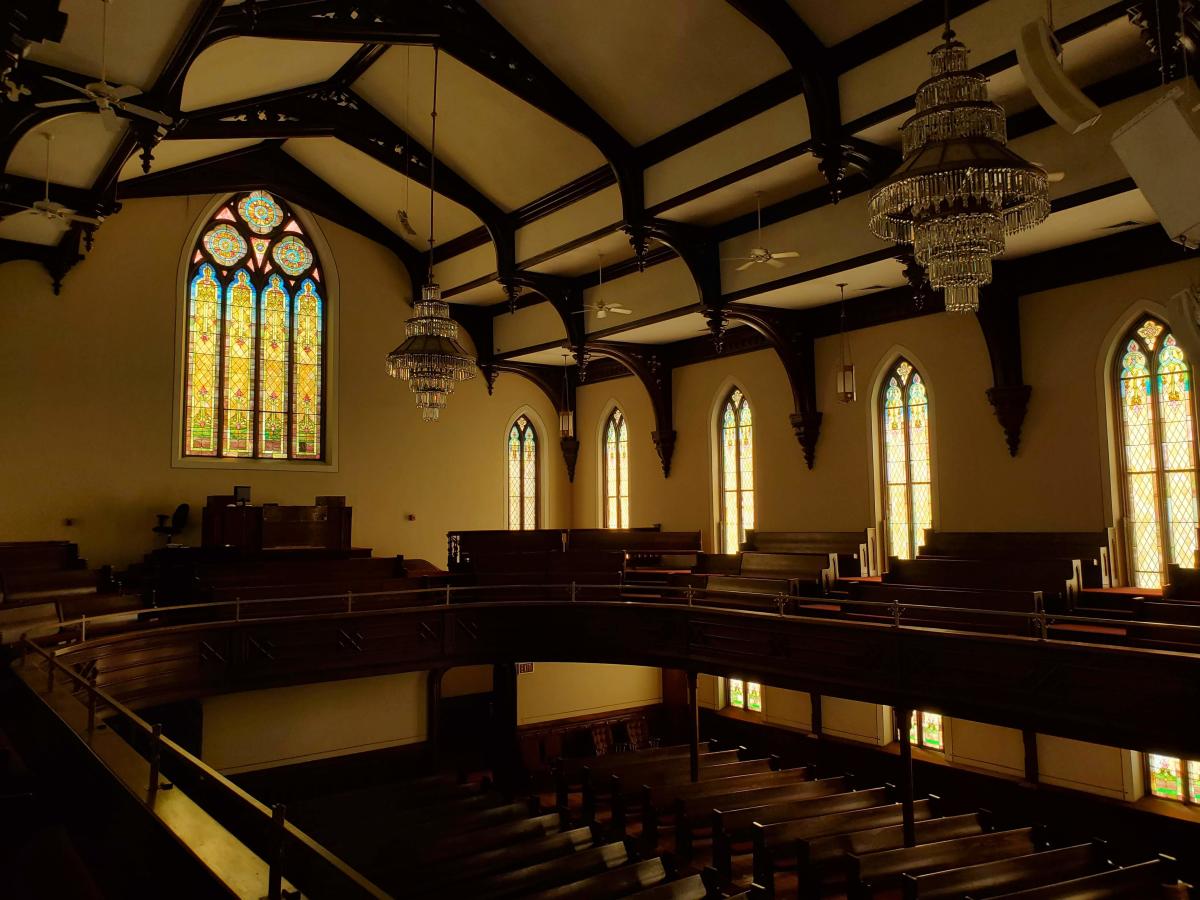
Founded in 1824, the Trinity congregation is the oldest in Lafayette. Started in the late 1860s, the current building was finished by 1873. Like First Baptist Church, the original spires were removed in the 1920s.
The historical archives located on the second floor are a testament to Trinity’s historical significance. The archives contain documents, letters, paintings and even furnishings from the original sanctuary.

To discover other historic churches in downtown Lafayette, check out this brochure. Additionally, visit Home of Purdue to learn more about the fascinating history and fun happenings in Lafayette and West Lafayette!
Purdue University Student, Mina Reising, shares this blog. This blog is part of a series of articles submitted to Visit Lafayette-West Lafayette through a cooperation with a 400-level travel writing class at Purdue University.

